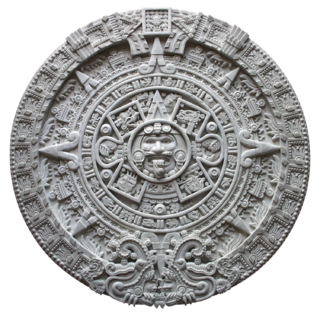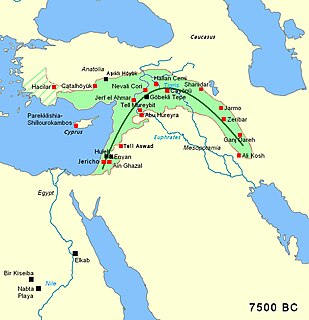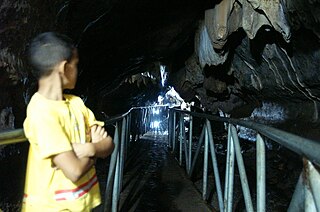Related Research Articles

Honduras, officially the Republic of Honduras, is a country in Central America. The republic of Honduras is bordered to the west by Guatemala, to the southwest by El Salvador, to the southeast by Nicaragua, to the south by the Pacific Ocean at the Gulf of Fonseca, and to the north by the Gulf of Honduras, a large inlet of the Caribbean Sea. Its capital and largest city is Tegucigalpa.

The Mosquito Coast, also known as the Miskitu Coast, Mosquito Shore and the Miskitu Kingdom, historically included the kingdom's fluctuating area along the eastern coast of present-day Nicaragua and Honduras. It formed part of the Western Caribbean Zone. It was named after the local Miskitu Nation and was long dominated by British interests. The Mosquito Coast was militarily incorporated into Nicaragua in November 1894; however, in 1960, the northern part was granted to Honduras by the International Court of Justice.

Mesoamerican chronology divides the history of prehispanic Mesoamerica into several periods: the Paleo-Indian ; the Archaic, the Preclassic or Formative (2500 BCE – 250 CE), the Classic (250–900 CE), and the Postclassic (900–1521 CE); as well as the post European contact Colonial Period (1521–1821), and Postcolonial, or the period after independence from Spain (1821–present).

The Neolithic Revolution, or the (First) Agricultural Revolution, was the wide-scale transition of many human cultures during the Neolithic period from a lifestyle of hunting and gathering to one of agriculture and settlement, making an increasingly large population possible. These settled communities permitted humans to observe and experiment with plants, learning how they grew and developed. This new knowledge led to the domestication of plants.
La Mosquitia is the easternmost part of Honduras along the Mosquito Coast, which extends into northeastern Nicaragua. It is a region of tropical rainforest, pine savannah, and marsh that is accessible primarily by water and air. Its population includes indigenous and ethnic groups such as the Miskito, Pech, Rama, Sumo, Garífuna, Ladino, and Creole peoples. La Mosquitia has the largest wilderness area in Central America, consisting of mangrove swamps, lagoons, rivers, savannas, and tropical rain forests. The Río Plátano Biosphere Reserve, a World Heritage site, is a part of La Mosquitia.

The Río Plátano Biosphere Reserve is 5,250 km2 of preserved land in the La Mosquitia region on the Caribbean coast of Honduras. Most of the land runs along the Río Plátano. The reserve has a number of endangered species and some of Honduras largest sections of forest. It has been a World Heritage site and biosphere reserve since 1982. In 2011, UNESCO placed the reserve on the List of World Heritage in Danger.

The Patuca is a river in northeastern Honduras, formed southeast of Juticalpa by the merger of the Guayape and Guayambre rivers. It is the second largest river in Central America and the longest river of Honduras, measuring almost 500 kilometres (310 mi) long and draining 23,900 square kilometres (9,200 sq mi).
Douglas Jerome Preston is an American journalist and author. Although he is best known for his thrillers in collaboration with Lincoln Child, he has also written six solo novels, including the Wyman Ford series and a novel entitled Jennie, which was made into a movie by Disney. He has authored a half-dozen nonfiction books on science and exploration and writes occasionally for The New Yorker, Smithsonian, and other magazines.

Maya architecture spans several thousands of years, several eras of political change, and architectural innovation before the Spanish colonization of the Americas. Often, the buildings most dramatic and easily recognizable as creations of the Maya peoples, are the step pyramids of the Terminal Preclassic Maya period and beyond. Based in general Mesoamerican architectural traditions, the Maya utilized geometric proportions and intricate carving to build everything from simple houses to ornate temples. This article focuses on the more well-known pre-classic and classic examples of Maya architecture. The temples like the ones at Palenque, Tikal, and Uxmal represent a zenith of Maya art and architecture. Through the observation of numerous elements and stylistic distinctions, remnants of Maya architecture have become an important key to understanding their religious beliefs and culture as a whole.

Mesoamerica is a historical region and cultural area in North America. It extends from approximately central Mexico through Belize, Guatemala, El Salvador, Honduras, Nicaragua, and northern Costa Rica. Within this region pre-Columbian societies flourished for more than 1,000 years before the Spanish colonization of the Americas. Mesoamerica was the site of two of the most profound historical transformations in world history: primary urban generation, and the formation of New World cultures out of the long encounters among Indigenous, European, African and Asian cultures.

Mesoamerican architecture is the set of architectural traditions produced by pre-Columbian cultures and civilizations of Mesoamerica, traditions which are best known in the form of public, ceremonial and urban monumental buildings and structures. The distinctive features of Mesoamerican architecture encompass a number of different regional and historical styles, which however are significantly interrelated. These styles developed throughout the different phases of Mesoamerican history as a result of the intensive cultural exchange between the different cultures of the Mesoamerican culture area through thousands of years. Mesoamerican architecture is mostly noted for its pyramids, which are the largest such structures outside of Ancient Egypt.

Talgua Cave,, is a cave located in the Olancho Valley in the municipality of Catacamas in northeastern Honduras. The misnomer “The Cave of the Glowing Skulls” was given to the cave because of the way that light reflects off of the calcite deposits found on the skeletal remains found there. The site has gained the interest of archaeologists studying cave burials of Central America and of Mesoamerica as one of the most extensive Early to Middle Pre-Classic ossuary cave sites currently known to have been in contact with the Maya societies of nearby Mesoamerica. It provides many valuable clues to how the inhabitants of the Talgua Cave may have been an important link between Pre-Columbian Mesoamerica and parts further south and east in Central America and extending into those societies in northern South America, a region known as the Isthmo-Colombian Area.
Pusilhá is an archaeological site in Belize. The location of this Late Classic Maya urban complex, along the east and west flow of trade, made the city a major transfer point for economic activities in the whole region. In addition, the city gave archaeologists a historical view of a secondary Maya site. Large and extended excavation efforts have changed the overall picture of Maya social and political relationships between larger and smaller cities and challenged the prevailing view of conquest and absorption of smaller cities into the larger cities in the region. The research conducted at Pusilhá began in 1927 and continues to this day.
La Ciudad Blanca is a legendary settlement said to be located in the Mosquitia region of the Gracias a Dios Department in eastern Honduras. This extensive area of rainforest, which includes the Río Plátano Biosphere Reserve, has long been the subject of multidisciplinary research. Archaeologists refer to it as being a part of the Isthmo-Colombian Area of the Americas, one in which the predominant indigenous languages included those in the Chibchan and Misumalpan families. Due to the many variants of the story in the region, most professional archaeologists doubt it refers to any one actual settlement, much less one representing a city of the Pre-Columbian era.

Theodore A. "Ted" Morde, an adventurer, explorer, diplomat, spy, journalist, and television news producer best known for his unverified claim of discovering the "Lost City of the Monkey God".

Cihuatán is a major pre-Columbian archaeological site in central El Salvador. It was a very large city located in the extreme south of the Mesoamerican cultural area, and has been dated to the Early Postclassic period of Mesoamerican chronology.

Steve Elkins is an American cinematographer and explorer.

The Spanish conquest of El Salvador was the campaign undertaken by the Spanish conquistadores against the Late Postclassic Mesoamerican polities in the territory that is now incorporated into the modern Central American nation of El Salvador. El Salvador is the smallest country in Central America, and is dominated by two mountain ranges running east–west. Its climate is tropical, and the year is divided into wet and dry seasons. Before the conquest the country formed a part of the Mesoamerican cultural region, and was inhabited by a number of indigenous peoples, including the Pipil, the Lenca, the Xinca, and Maya. Native weaponry consisted of spears, bows and arrows, and wooden swords with inset stone blades; they wore padded cotton armour.
The Spanish conquest of Nicaragua was the campaign undertaken by the Spanish conquistadores against the natives of the territory now incorporated into the modern Central American republic of Nicaragua during the colonisation of the Americas. Before European contact in the early 16th century, Nicaragua was inhabited by a number of indigenous peoples. In the west, these included Mesoamerican groups such as the Chorotega, the Nicarao, and the Subtiaba. Other groups included the Matagalpa and the Tacacho.

The Lost City of the Monkey God: A True Story is a 2017 nonfiction book by Douglas Preston. It is about a project headed by documentary filmmaker Steve Elkins that used lidar to search for archaeological sites in the Río Plátano Biosphere Reserve of the Gracias a Dios Department in the Mosquitia region of eastern Honduras. The expedition was a joint Honduran-American multidisciplinary effort involving Honduran and American archaeologists, anthropologists, engineers, geologists, biologists and ethnobotanists.
References
- 1 2 Preston, Douglas (1 January 2017). "An Ancient City Emerges in the Remote Rainforest". The New Yorker. New York. Retrieved 22 February 2017.
- ↑ Fisher, Christopher; Juan Carlos Fernández-Díaz; Anna S. Cohen; Oscar Neil Cruz; Alicia M. González; Stephen J. Leisz; Forencia Pezzutti; Ramesh Shrestha; William Carter (2016). "Identifying Ancient Settlement Patterns through LiDAR in the Mosquitia Region of Honduras". PLOS ONE. 11 (8): e0159890. Bibcode:2016PLoSO..1159890F. doi: 10.1371/journal.pone.0159890 . PMC 4999160 . PMID 27560962.
- ↑ Preston, Douglas (2017). The Lost City of the Monkey God: A True Story. New York: Grand Central Publishing. ISBN 978-1-4555-4000-6.